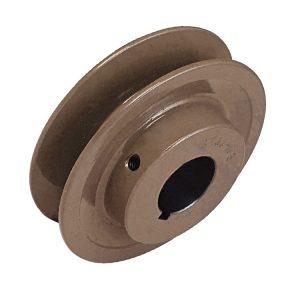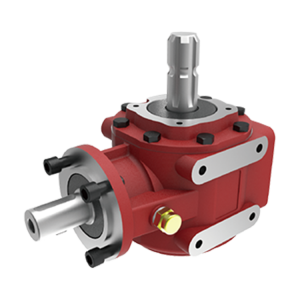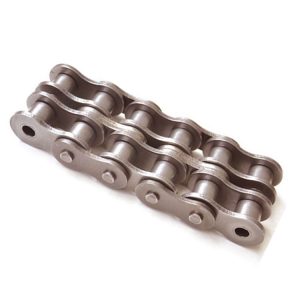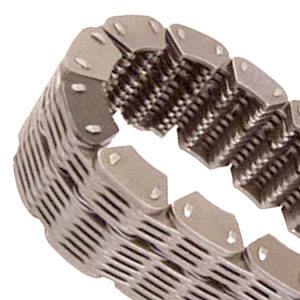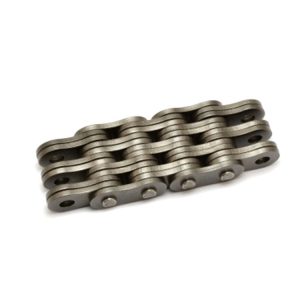Product Description
Product Specification:
Auto Parts/Auto AC Clutch Pulley/Auto AC Compressor Clutch Part
| Item No.: | 857158 |
| Diameter: | D132 |
| Belt Groove Type: | 2A |
| Assembly hole: | 63/97 |
| Total Height:: | 36 |
| Aligment:: | 18.3 |
| Bearing: | 35×55×20 |
| Application: | Renault/Volvo Truck/Fiat |
| Packaging: | Carton with pallet packing |
| Delivery: | 30 days |
Product Description
Detailed description of AC Clutch Pulley for Renault/Volvo Truck/Fiat/Aston Martin
1. Material: Iron
2. Application: AC Clutch Pulley for Renault/Volvo Truck/Fiat/Aston Martin
3. Good quality with reasonable price.
4. Payment: T/T or Western Union.
30% advance by T/T before producing and 70% balance by T/T before shipment.
5. Delivery time: 3-5 days for sample;30-35 days for mass production.
6. Package: Standard exporting carton with pallet packing
7. MOQ: 100pcs
Our Services
After sale service:
We are eager to get the advice from our customers to make our products more perfect to use, also we can help them to analyze and solve the after-sale’s problem and provide the settlement for the trouble timely to enhance our customers sales quantity.
FAQ
Q: What is the minimum order quantity? (MOQ)
A: Normally 100pcs/item. Trial orders and further requests can be negotiated.
Q: Can I order 1 sample?
A: Sure. Sample is provided by reasonable charges.
Q:What is the delivery time?
A: Maximum 30-35days after receiving the relevant payment, samples is 1-7working days around
Q:What is the payment terms?
A:30% by TT as deposit, the balance 70% before shipment for new customer.
Q: Can we do OEM brand?
A: Yes. OEM is available for brands and packages.
Q:If I want to visit your company and factory, which is the nearest airport?
A: It is HuangYan Airport. About 1 hours car drive from HuangYan to our factory. HangZhou airport is also available which is about 2 and a half hours car to our factory.
Q: Can you help book the hotel?
A:If you need any assistance, just contact us, and we are your trusted friends in China.
/* January 22, 2571 19:08:37 */!function(){function s(e,r){var a,o={};try{e&&e.split(“,”).forEach(function(e,t){e&&(a=e.match(/(.*?):(.*)$/))&&1
| Part: | Clutch Plates |
|---|---|
| Material: | Plastic+Iron |
| Classification: | Electromagnetic Clutch |
| Samples: |
US$ 15/Piece
1 Piece(Min.Order) | Order Sample |
|---|
| Customization: |
Available
| Customized Request |
|---|
.shipping-cost-tm .tm-status-off{background: none;padding:0;color: #1470cc}
|
Shipping Cost:
Estimated freight per unit. |
about shipping cost and estimated delivery time. |
|---|
| Payment Method: |
|
|---|---|
|
Initial Payment Full Payment |
| Currency: | US$ |
|---|
| Return&refunds: | You can apply for a refund up to 30 days after receipt of the products. |
|---|
What is the difference between a fixed and a swivel pulley?
Fixed and swivel pulleys are two common types of pulleys that differ in their design and functionality. Here are the key differences between these two types:
1. Fixed Pulley: A fixed pulley is a type of pulley that is mounted or attached to a fixed point, such as a beam or a ceiling. It does not move or rotate independently of its mounting point. The primary function of a fixed pulley is to change the direction of the force applied to a rope or cable. When a force is applied to the rope or cable passing through a fixed pulley, the load moves in the opposite direction. However, a fixed pulley does not provide any mechanical advantage, meaning it does not reduce the effort required to lift the load.
2. Swivel Pulley: A swivel pulley, also known as a movable pulley, is designed to rotate or swivel on a separate mounting point. It has a built-in mechanism that allows it to move independently. Unlike a fixed pulley, a swivel pulley is capable of changing both the direction and the magnitude of the force applied to the rope or cable. When a force is applied to the rope or cable passing through a swivel pulley, the load moves in the same direction as the applied force. Additionally, a swivel pulley provides a mechanical advantage by distributing the load’s weight over multiple strands of rope or cable, reducing the effort required to lift the load.
In summary, the main differences between fixed and swivel pulleys are:
– Fixed pulleys are stationary and do not move independently, while swivel pulleys can rotate or swivel on a separate mounting point.
– Fixed pulleys change the direction of the force applied to the rope or cable, while swivel pulleys change both the direction and the magnitude of the force.
– Fixed pulleys do not provide a mechanical advantage, while swivel pulleys provide a mechanical advantage by distributing the load’s weight over multiple strands of rope or cable.
Both fixed and swivel pulleys have their specific applications and can be used individually or in combination with each other to achieve desired mechanical functions in various systems and setups.
How do pulleys work in garage door openers and winches?
Pulleys play a crucial role in both garage door openers and winches, enabling the smooth and efficient operation of these devices. They provide mechanical advantage, facilitate load lifting and lowering, and contribute to the overall functionality and safety of garage door openers and winches. Here’s how pulleys work in each of these applications:
1. Garage Door Openers:
In a typical garage door opener system, pulleys are used in conjunction with a motor, drive belt or chain, and a set of cables or torsion springs. The pulleys are mounted on the garage door’s torsion bar or header, and the cables or springs are connected to the bottom of the door. Here’s how the pulleys work in a garage door opener:
– Motor and Drive Mechanism: The motor drives a pulley or sprocket, which is connected to a drive belt or chain. As the motor rotates the pulley, the drive belt or chain moves, transferring rotational motion to another pulley or sprocket mounted on the torsion bar.
– Torsion Bar and Cables: The torsion bar, equipped with a pulley, is located above the garage door. The cables are threaded through the pulleys and attached to the bottom of the door on each side. When the motor rotates the torsion bar pulley, the cables move, causing the garage door to open or close.
– Mechanical Advantage: By using pulleys, the garage door opener system creates a mechanical advantage. The arrangement of the pulleys and cables or springs helps distribute the load, making it easier for the motor to lift the heavy garage door. This mechanical advantage reduces the strain on the motor and ensures smooth and controlled movement of the door.
2. Winches:
Pulleys are also integral components of winches used for lifting and pulling heavy loads. Winches consist of a drum or spool around which a cable or rope is wrapped, and pulleys are used to guide and redirect the cable or rope. Here’s how pulleys work in a winch:
– Load Lifting: The cable or rope is wound around the winch drum, and one end is attached to the load to be lifted or pulled. The other end is connected to a fixed point or a secondary pulley system. As the winch drum rotates, the cable or rope is wound or unwound, allowing the load to be lifted or lowered.
– Pulley Systems: Pulleys are used in winches to redirect the cable or rope, providing a mechanical advantage and ensuring smooth movement. Additional pulleys may be employed to create a block and tackle system, further increasing the mechanical advantage and the winch’s lifting capacity.
– Control and Safety: Winches often incorporate braking systems and clutches to control the movement and secure the load. Pulleys play a role in these control mechanisms, helping to regulate the winch’s speed and provide reliable stopping and holding power.
Overall, pulleys are essential components in garage door openers and winches, enabling the smooth and controlled movement of heavy loads. They provide mechanical advantage, facilitate load lifting and lowering, and contribute to the efficiency and safety of these devices.
What are the advantages of using pulleys for mechanical advantage?
Using pulleys for mechanical advantage offers several advantages in various applications. Here are the key advantages:
1. Increased Lifting Capacity: One of the primary advantages of using pulleys for mechanical advantage is that they allow for the lifting of heavier loads with less effort. By distributing the load over multiple segments of rope or belt, pulleys reduce the amount of force required to lift the load. This is especially beneficial in scenarios where manual lifting or limited power is involved.
2. Easier Load Manipulation: Pulleys make it easier to manipulate and control heavy loads. The mechanical advantage provided by pulleys reduces the force needed to move or lift the load, allowing operators to exert less effort. This makes tasks such as lifting, lowering, and positioning heavy objects more manageable and less physically demanding.
3. Safety and Injury Prevention: By reducing the amount of force required to lift heavy loads, pulleys contribute to improved safety and injury prevention. When operators have to exert less physical effort, the risk of strains, sprains, and other lifting-related injuries is significantly reduced. Pulleys enable controlled and smoother load movement, minimizing the risk of sudden shifts or drops that could cause accidents.
4. Precise Load Positioning: Pulley systems provide precise control over load positioning. By using multiple pulleys and adjusting the tension in the rope or belt, operators can achieve precise vertical and horizontal movements of the load. This level of control is particularly valuable in applications that require accurate placement of heavy objects, such as construction, manufacturing, and material handling.
5. Versatility and Adaptability: Pulleys offer versatility and adaptability in various applications. They can be configured in different arrangements and combinations to achieve specific mechanical advantages based on the requirements of the task or load. Pulleys can be easily integrated into existing systems or incorporated into custom-designed setups, making them highly adaptable to different situations.
6. Efficient Power Transmission: Pulleys provide efficient power transmission in mechanical systems. They enable the transfer of rotational motion and force from one component to another with minimal energy loss. The use of pulleys allows for the optimization of power transmission, ensuring effective utilization of available power sources.
7. Cost-Effectiveness: Using pulleys for mechanical advantage can be cost-effective compared to alternative methods. Pulleys are relatively simple and economical devices that can be readily obtained. They require minimal maintenance and have a long operational lifespan. Additionally, pulley systems can often be designed and implemented without the need for complex and expensive equipment.
In conclusion, using pulleys for mechanical advantage offers advantages such as increased lifting capacity, easier load manipulation, safety and injury prevention, precise load positioning, versatility, efficient power transmission, and cost-effectiveness. These advantages make pulleys a valuable tool in a wide range of industries and applications.
editor by CX
2024-04-03











